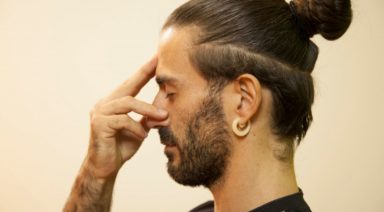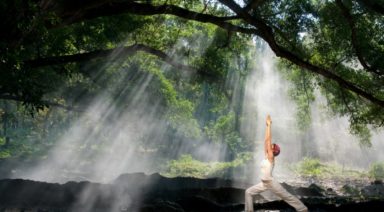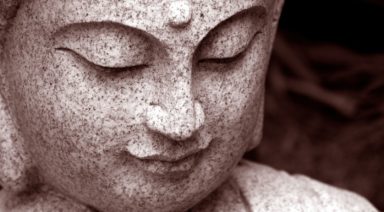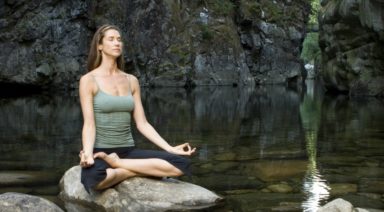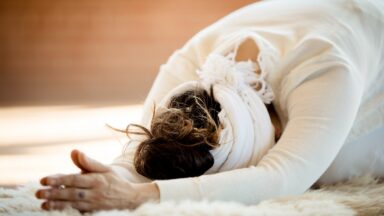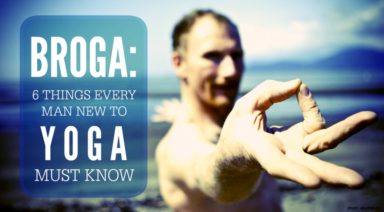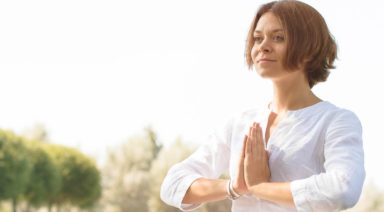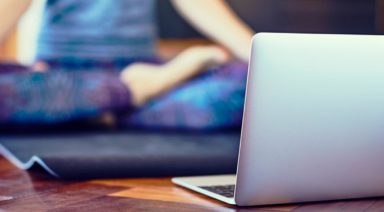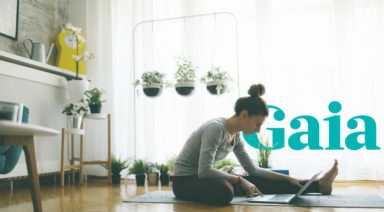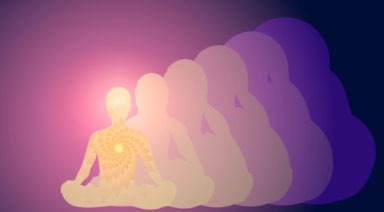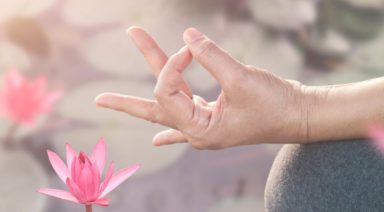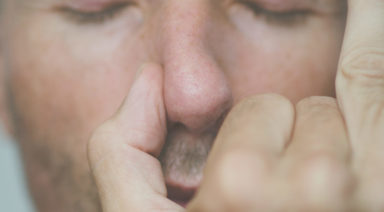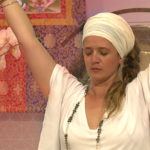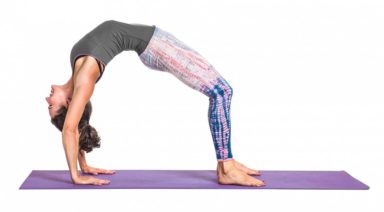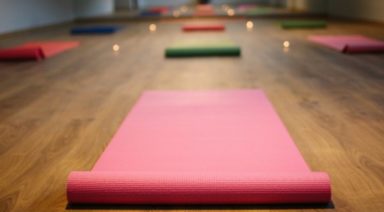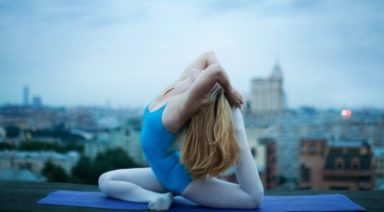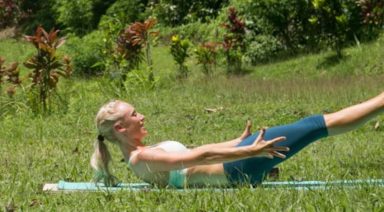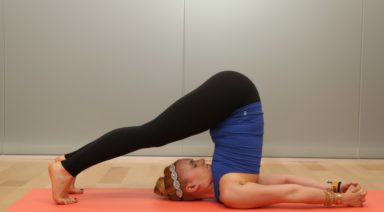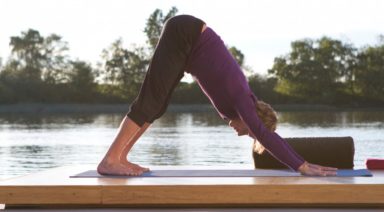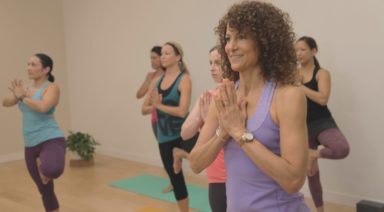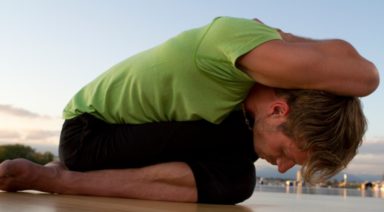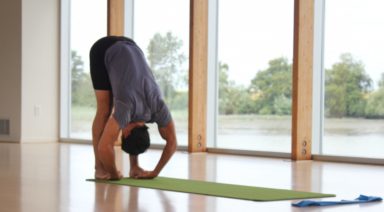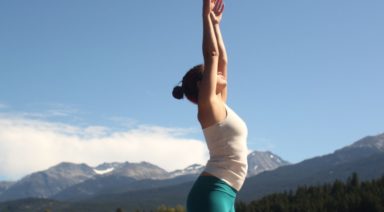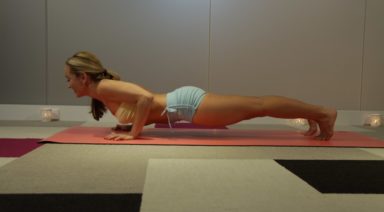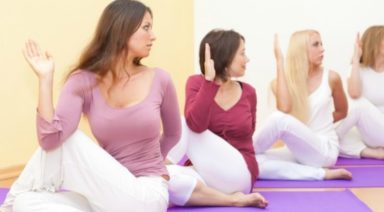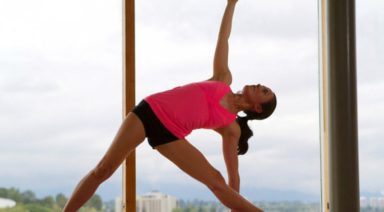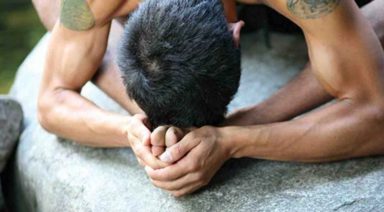The Anatomy of Pranayama: Understanding Our Breath
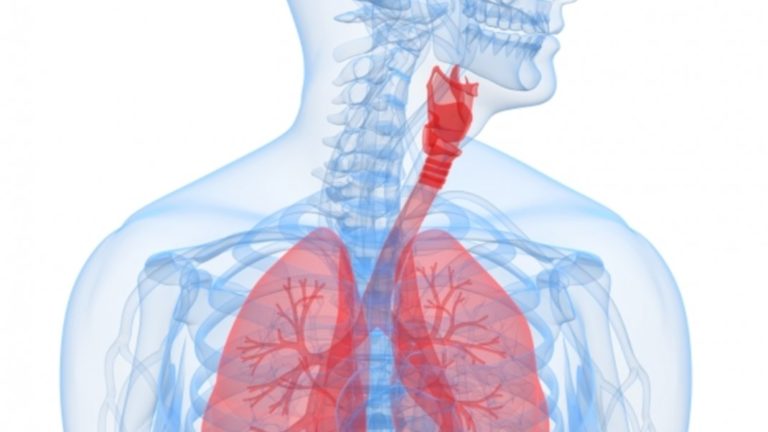
Full body breathing is an extraordinary symphony of both powerful and subtle movements that massage our internal organs, oscillate our joints, and alternately tone and release all the muscles in the body. It is a full participation with life.
– Donna Farhi, The Breathing Book
Breathing is a simple act we have performed since the moment we were born, but for many of us only becomes illuminated within our yoga practice. We might go all day without noticing our breath until the moment we come to the mat – and observe. Of all the functions of our body, the act of breathing is one of the most fascinating. It is completely subconscious yet we can exert conscious control. It is a muscular act, yet one also controlled by the laws of science that govern molecules of gas. It sustains our life, nourishes our organs, helps expel waste from our body, and can affect our emotional state by acting on our nervous system. Understanding exactly how our body performs this extraordinary act can bring us deeper into our pranayama (breathing) practice.
The Path of the Breath
As we breathe in through the mouth and nose, air flows into our trachea (windpipe) and divides into tree-like right and left bronchi and into the lungs into smaller branching bronchioles. These end in alveoli which are the main site of oxygen and carbon dioxide gas exchange. The lungs are actually dense, sponge like organs that extend from just above our clavicle (collarbone) to our lower ribs. Our right lung is larger than our left due to the close proximity of the heart to the left lung.
The driving force behind our breath is one of the most important muscles in the body: the diaphragm. It is a dome shaped muscle that attaches from our sternum (chest bone) at the front, wrapping around the inside of our lower ribs seven through twelve, and to our spine via finger like projections to L1-4 vertebrae. It separates the organs of our chest from our abdominal and pelvic organs. It also has openings for blood vessels to travel through as well as two muscles: the quadratus lumborum and the psoas muscle. This close relationship with two important muscles of the lower back and pelvis may partly explain why people with low back pain have altered breathing patterns.
Under Pressure
As we inhale the diaphragm lowers, and as we exhale the diaphragm relaxes and rises up. This affects the volume of the thoracic (chest) and abdominal cavities, and in turn the pressure of the oxygen and carbon dioxide molecules. Gases always fill their container. In a large space the molecules are far apart therefore the pressure is low. Much like a busy yoga class, in a small space the molecules are close together so the pressure is high. Since gases flow down a pressure gradient from high to low, when the thoracic cavity volume increases, the pressure decreases and causes air to rush in from the atmosphere. The dimensions only change a few millimeters but it increases the volume of the thoracic cavity by almost half a liter. Inspiration ends when the pressure in the lungs matches the pressure in the atmosphere. On exhalation the diaphragm and other muscles of breathing relax, the lungs recoil, thoracic volume decreases compressing the alveoli and the pressure in the lungs rises again, which forces gases to flow out of the lungs.
You can experience this action on yourself. Place one hand on your upper belly, just below your sternum. As you inhale, notice how your abdominal organs depress and your belly widens as your diaphragm drops down. As you exhale observe the diaphragm rising and your belly resuming its natural position. This natural phenomenon is what your yoga teacher may refer to as belly breathing. In our culture of tummy sucking in, this feeling of letting the stomach expand may feel foreign or require some practice to access.
It Takes a Village
Although the diaphragm is the main muscle of breath, and gas exchange encourages the diaphragm to contract, there are also accessory muscles of breathing that enable movement of the rib cage and sternum essential to the breath. The 12 pairs of ribs attach at the spine to the corresponding numbered thoracic (mid-back) vertebrae. Ribs one through seven wrap around and attach to the sternum. Ribs 8, 9, and 10 are shorter and don’t quite make it all the way around to the sternum so attach at the front to the rib above. Ribs 11 and 12 are known as floating ribs since they have no attachments to the front of the body. Between each rib are intercostal muscles which enable the sternum to move up and out on an inhale, and the ribs to expand 360 degrees in a bucket handle pattern. (Imagine the handle of a bucket resting on a pail. If you were to pick up the bucket, the handle would rise in an arc.)
To experience this phenomenon on yourself, place your hands on the sides of your lower ribs. As you inhale, notice the rib movement not only up but also outwards in all directions. Next wrap your arms around yourself in a hug to feel your upper ribs near your scapula (shoulder blades). Inhale and feel the back of your body expand as your ribs move. We often only think of breath flowing in the front of our body but our back body also moves as the breath moves.
Now Breathe
The act of breathing is not only essential to life; it can be a transformative part of our yoga practice. It can allow us to go deeper into a pose or go deeper into relaxation. It can enable us to let go of distracting thoughts or emotions and make space for positive or calming ones. Understanding the anatomy of our pranayama practice can bring the practice to life, allowing us to picture the miracle that is occurring inside our bodies as we flow to our own individual rhythm of breath.
Pranayama Breath Control: The Key to Maximizing Your Energy
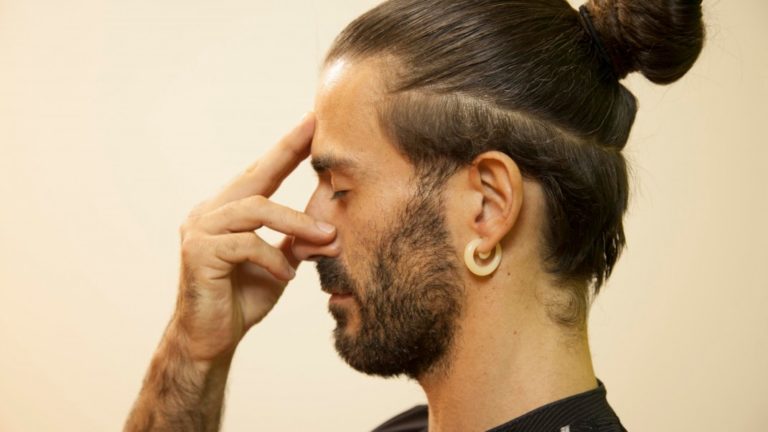
Yoga is an ancient practice that can take many different forms. From devotion, to physical movement, to the quest for knowledge, yoga is as unique as all of its various practitioners. Breath control has been and continues to be a large part of yoga. It is believed that breath control not only enhances clarity but, helps to restore the body’s natural flow of energy. In yoga there are more forms of breath control than you might imagine. The word pranayama can be broken down into two smaller words. The first word, “prana”, is the name for the life force or energy that flows through the body. The second half of pranayama is “ayama” which means extension or control. Alternately, the Sanskrit word “pra” also means before, or “to breathe”. This article will explore some of its forms, such as Samavrtti, Ujjayi, Kumbhaka, Anuloma Viloma, Kapalabhati, and Sithali. Although their names might sound complicated these breathing techniques are easy to practice and have varying degrees of mastery – much like yoga itself.
Samavrtti: The first type of breath control is the most normal and well known to every person that walks this Earth. Samavrtti in Sanskrit means “same action”. This is a steady even breath where the inhale matches or is equal to the exhale in duration. This is a slow and steady breath, the breath of relaxation. To begin practicing this form of breath control, inhale for four counts and then exhale for four counts. This action is believed to calm the mind and create a sense of balance.
Ujjayi: The next form of breath control is the most commonly practiced in yoga. Ujjayi breath means “victorious breath” in Sanskrit and is sometimes called the “ocean breath.” Ujjayi breath is an audible breath. This is formed by partially closing the epiglottal passage or slightly closing the throat. Much like Samavrtti, this breath is even. To practice Ujjayi close your mouth and breath in slowly and continuously for four counts. Exhale in the same manner, keeping the breath in through the nose. This form of breath control is said to help tone the internal organs, increase body health, improve concentration, and more.
Kumbhaka: This is the practice of holding one’s breath, which is where this form draws its name. Kumbhaka in Sanskrit means “to retain the breath”. Continuing to build on the pranayama previously described, begin with Ujjayi. Once you have established a comfortable rhythm, hold your breath for four to eight counts in between every four breaths. In the beginning your Kumbhaka or retention should start off shorter. As you become more practiced in this art, begin increasing the retention. Also one may begin to reduce the number of breaths in between the retentions. Kumbhaka is believed to strengthen the diaphragm, restore energy and cleanse the respiratory system.
Anuloma Viloma: This form of pranayama might look a bit funny to us Western practitioners of yoga but it is quite beneficial. Anuloma Viloma means Alternate Nostril Breathing in Sanskrit. Much like its name implies, practitioners use their right hand to alternate closing your different nostrils. The first step to learning how to practice this form of breath control is the Vishnu Mudra or hand position with the index and middle fingers curled. Lightly press your right thumb on the outside of the right nostril and inhale only through your left nostril. Keep your mouth closed. Close your left nostril with your ring finger and hold your breath momentarily. Release your thumb and exhale through the right nostril. Repeat the process inhaling through the right nostril. Start slowly with a low number of cycles and then progress from there. This form of breath control is believed to promote the flow of energy, as well as lower the heart rate and relieve stress.
Kapalabhati: Also known as “The Shining Skull,” this type of pranayama is a little bit different from those we have previously explored. Kapalabhati incorporates a rhythmic action by pumping your abdominal muscles on the exhales. Loosen up your abdominal muscles before beginning this practice. To begin, fill your lungs and then push all of the air out in a quick thrust. Inhalation automatically follows, creating this rhythm of breathing. Upon the exhale you have completed one cycle. When starting this practice begin with a low number of cycles or repetitions such as 10. Continue to build from there working up towards four rounds of twenty cycles of breath. This pranayama is thought to strengthen the diaphragm, restore energy and cleanse the respiratory system.
Sithali: Our final form of pranayama for this article, sithali, is roughly translated as “The cooling breath.” This form differs from other types of pranayama as the inhale is drawn through the mouth. Begin by curling your tongue and then slightly stick it out. Draw your breath in through your curled tongue, retain the breath closing your mouth and exhale through your nose. Repeat this process anywhere between five to ten cycles. This type of prana energy is believed to cool the body while providing a feeling of wellness.
**Contraindications: Some pranayama techniques such as breath retention or sharp, forceful breathing may not be safe during pregnancy.
**References: Much of this information comes from the wonderful resource of “Anatomy of Yoga” by Dr. Abigail Ellsworth



